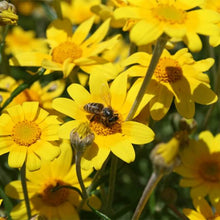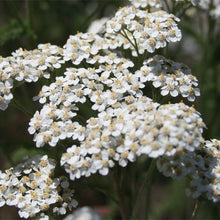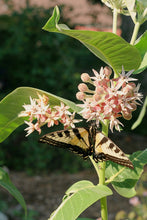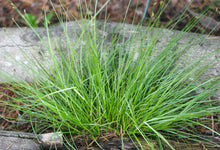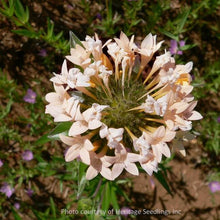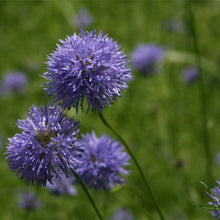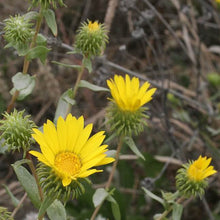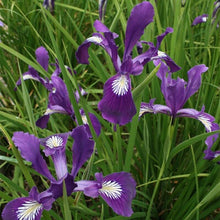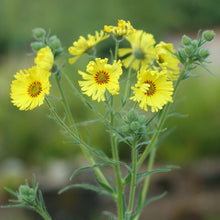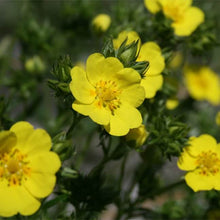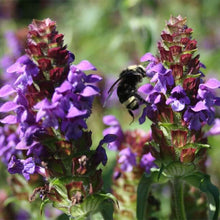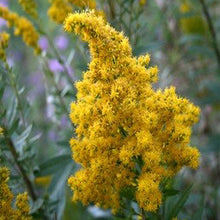
Whether you have deer or not, this is a lovely mix for yardscapes, meadowscapes, and gardens alike. Although in designing it, we were trying to keep in mind those who try to co-exist with the deer that grace our open spaces. Through our own experience and those of others, we've attempted to create a lovely wildflower composition that will hopefully be less tempting to deer while still offering tempting delights to our pollinators. We won't go as far as to say it is deer-proof, but these species have shown themselves to be at least deer-resistant.... mostly! Deer can be hard to predict. Their palate not only differs from population to population, but also differs seasonally. So, what they eat at one location or time of year may differ from other locations and times of year. They can be challenging! (Willamette Wildlings)
Packet covers approx 15 sq ft.
Species included:
Achillea millefolium - Common yarrow
Allium amplectens - Narrow-leaved onion
Asclepias speciosa - Showy milkweed
Carex tumulicola - Foothill sedge
Collomia grandiflora - Grand collomia
Eriophyllum lanatum - Oregon sunshine
Geum macrophyllum - Large-leaved avens
Gilia capitata - Blue globe gilia
Grindelia integrifolia - Willamette Valley gumweed
Iris tenax - Oregon iris
Lomatium nudicaule - Barestem biscuitroot
Lupinus polycarpus (micranthus) - Smallflower lupine
Madia elegans - Common madia
Potentilla gracilis - Slender cinquefoil
Prunella vulgaris v. lanceolata - Lanceleaf selfheal
Ranunculus occidentalis - Western buttercup
Sisyrinchium idahoense - Blue-eyed grass
Solidago elongata- West coast goldenrod
Wildflower meadow establishment
Site location and Preparation:
Wildflower meadows need an open sunny area with at least 6 hours of full sun per day to thrive. Reduce weeds on the soil surface prior to sowing – good site prep is crucial for success. Try not to skimp on this part of the process. Your site should be as free of existing vegetation as possible. Sod removal, seedbank removal, solarization, sheet mulching, digging, and any combination thereof are all options. Tilling, however, is not recommended as it will bring a whole host of weed seeds to the surface where they will germinate – they are best left buried!
Timing:
In the Willamette Valley, September through November is the best time for planting wildlflower seed mixes. They can still be planted into late winter, but this is not optimal. Most of these species need some exposure to cool temperatures and damp conditions before germination can occur – and the period of exposure varies from species to species. If planted too late in the fall/winter season, some species may not receive their required stratification period and, therefore, may not germinate.
Seeding Tips:
Seed/Sq Ft: A common target seeding rate for the Willamette Valley is 30 – 60 seeds/sq. ft. With the lower end being on a very clean site and the upper end being a site with some existing vegetation.
One option is to mix the seed with a cutting agent for the best distribution. Inert materials such as vermiculite, coarse-textured sand, rice hulls, and sawdust are all viable options. Mix seed with equal or greater amount of cutting agent. To help achieve a more uniform distribution you can cut the mixture in half. Apply half walking in one direction and the other half walking in a perpendicular direction.
It is OK to cover seed with a light dusting of soil (sift potting soil through a sieve to dust the seeded area with fine soil). Cover only until you can barely see the cutting agent – no more. Some seed species need light to germinate. However, this very thin layer may help hasten germination and help minimize seed predation.
Post-seeding care:
Watering: If there is no rain in the immediate forecast, water in the newly sown seeds. Also, if there is no rainfall within a few days, water only lightly as needed until you see some seeds sprouting.
Fertilizing: It is not necessary to fertilize your wildflower meadow under normal conditions. Native plants do not require fertilizer, and the application of fertilizer with high nitrogen content will tend to encourage weed growth.
For information regarding Meadowscaping, check out this link and their awesome handbook:
Photo Credits - Showy milkweed, Foothill sedge and Common madia: Karli Del Biondo, Beetles and Bees
Photo Credits - All others: Willamette Wildlings












